With that thought in mind, during a backpacking trip I took Aidan and Paige on when they were 12 and 10, we talked about ways to keep kids happy on a hike. Who better to answer the question than kids, right? We set out for Big Creek in Great Smoky Mountains National Park (which is a great family destination for a hike, by the way). Without further adieu, here’s what we came up with!
1. Choose a “cool” trail.
For me, hiking is a form of meditation and relaxation. It’s also great exercise to tackle a long, tough hike. For kids, these factors don’t hold much weight. They may be out on a trail simply because they didn’t have a choice in the matter. That’s okay though–we parents have to make plenty of decisions for our kids for their well being. Getting them outdoors and hiking is a great way to exert our executive parenting powers! On that note though, choosing a trail wisely will make all the difference with their enthusiasm level on your next venture into the woods.
A trail with some “kid cool” features–rocks to scramble on or a bald mountain to run across, will certainly earn you some points. More often than not though, water is the solid ticket. While my kids appreciate the majestic beauty of a raging waterfall, what they’d rather encounter is a small creek where they can explore and play. A quest to find salamanders and crayfish can become an all-day event, if time allows. If a swimming hole is involved on a hot summer’s day, even better.
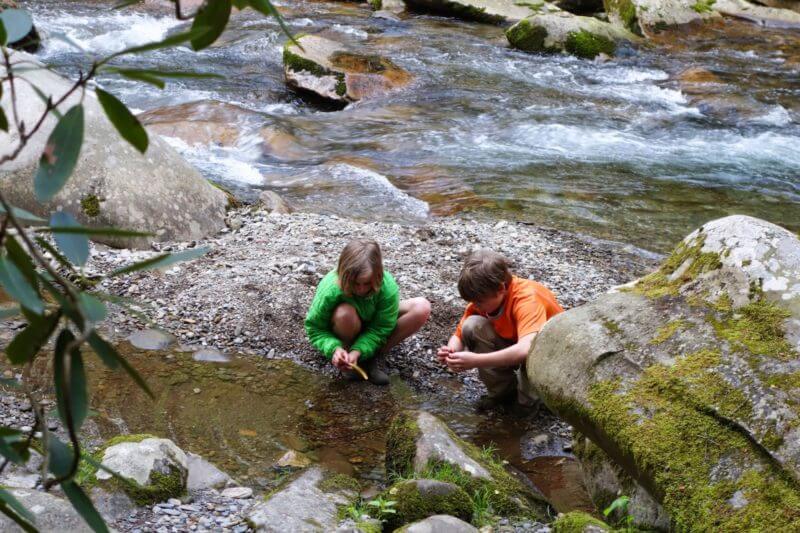
Bonus points for a stream setting
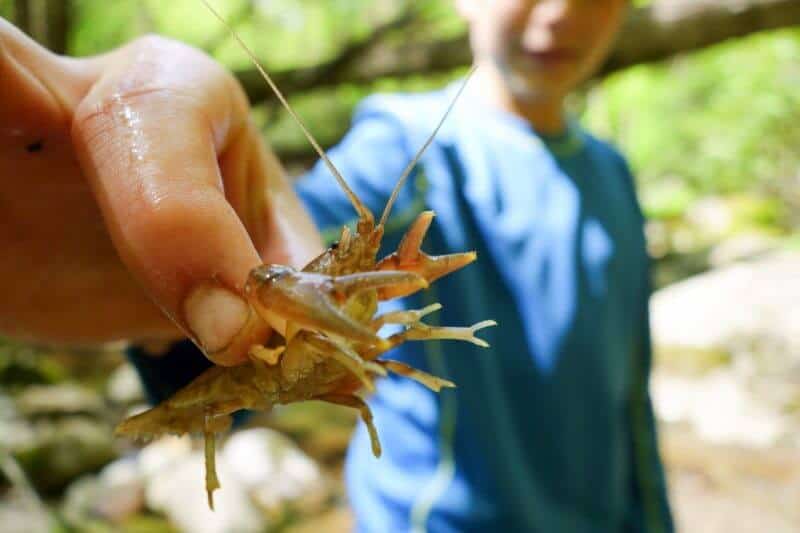
Crayfish are cool!
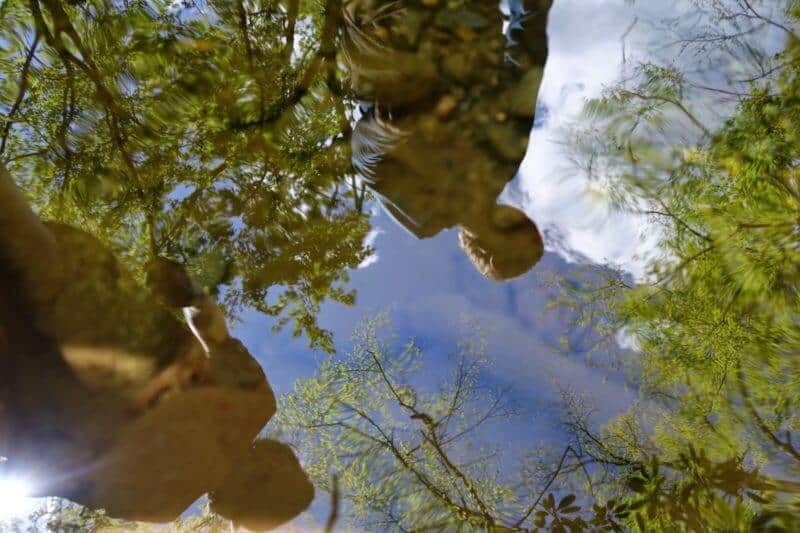
Beautiful day!
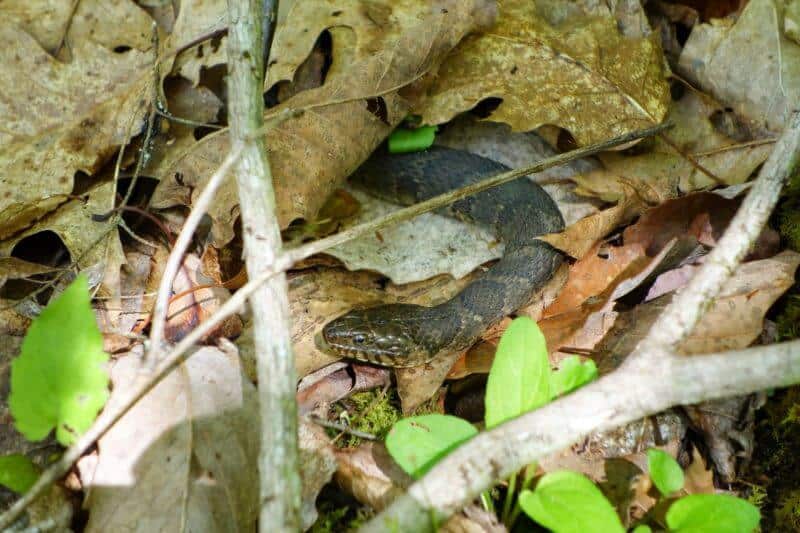
This was a milestone day seeing this Northern Water Snake by the creek. Paige spotted him first, and for the first time ever she didn’t take off in a sprint, running a marathon distance, to get away from him. She simply said with a surprised tone, “There’s a snake!” Can you tell the difference between a venomous and nonvenomous snake? He’s not venomous, by the way–Timber Rattlesnakes and Copperheads are the only venomous snakes in our region.
2. Buy quality gear and let them add a creature comfort to it.
My family has hosted several groups of A.T. thru hikers in our home, and they are a wealth of knowledge about all things backpacking. “Twinkle,” one hiker we hosted with extensive experience and thousands of miles under his hip belt, introduced me to Gossamer Gear, a company most known for its lightweight, high-quality backpacks. This guys knows gear and has the miles behind him to prove its worth. My entire family carries Gossamer Gear’s Mariposa pack on our backpacking trips now, and I can’t say enough good things about it.
The same can be said for tents, sleeping bags, and all other sorts of backpacking equipment with finding lighter options. Big name brands are fine, but I’ve become very partial to the smaller companies who tend to create lighter gear. If you want to see what I carry in my own pack to get ideas, click here .
In that fancy new lightweight pack you purchase, a favorite stuffed animal packed in it can go a long way with emotional comfort for a child, especially on an overnight trip. Aidan has hiked with one of the stuffed animals my mom gave him since he was old enough to hike, and the fact that he still brings “Bowser” or “Darwin” on our hikes simply melts my heart each and every time. On this particular trip, he told me he wanted to grow a beard when he hiked the A.T. one day. What I wanted to ask is, “Will you bring one of your lovies with you too?”
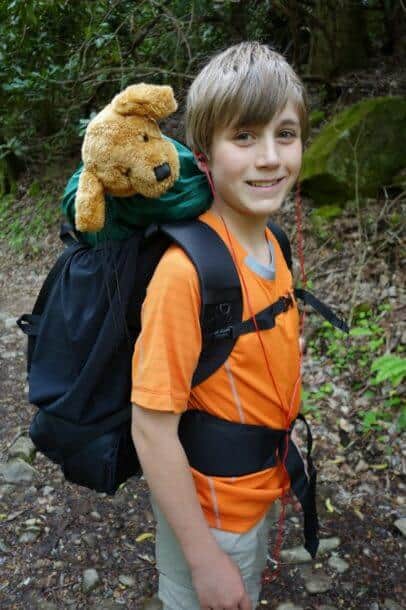
Aidan and Bowser, his favorite stuffed animal
Most parents I know feel like their children have limitless reserves of energy. Heck, most parents I know think their kids actually siphon off their own energy stores, leaving them utterly exhausted by the end of the day (or is that just me?)! While all this may be true, it does not translate into pushing them hard on a hike. Every child is unique in this regard, and each individual child’s limits will even change from hike to hike.
The biggest take home message is to start small with miles, pick an easy trail with lots of “kid cool” scenery, and build up on subsequent hikes. And don’t forget to take into account your youngest child who is more than likely your weakest link with mileage. If they’re not happy, no one will be happy!
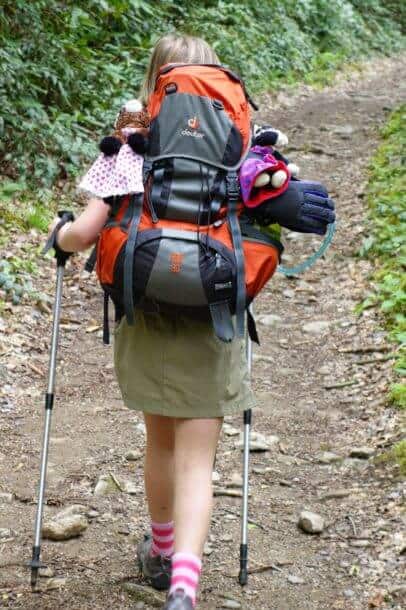
If you’re backpacking, it’s especially important to keep mileage and terrain in check. I try not to add more than 10-15% of my kids’ weights to their packs when we go on overnight trips.
4. Feed them (sort of) healthy food.
At home, I’m a stickler for nutrition and want my kids to eat a well-balanced diet with more fruits and vegetables than Goldfish crackers and granola bars. On the trail, those rules are relaxed. My kids have been known to willingly go on a hike simply because they know they’re going to get a bag of Skittles to accompany them. True story.
I do balance the junk food with healthier choices like dried fruit and nuts or the most amazing jerky on the planet from Sunburst Trout, but there would be a mutiny if I didn’t bring some of the “off limits” food I usually deny them at home.
Don’t forget to feed them often on a hike. Many times, a cranky kid hiker is a hungry kid hiker. A handful of trail mix (heavy on the M&Ms, please), will often make all the difference in getting them moving again with a better attitude. Feed them preemptively and let them “graze” rather than feeding them a huge amount at one break. And don’t forget hydration! Encourage and remind them to drink often.
A reward at the end of the hike is also a great incentive. My family keeps the Chinese buffet restaurant in business because it is often the carrot at the end of the hiking stick for them after a long day in the woods!
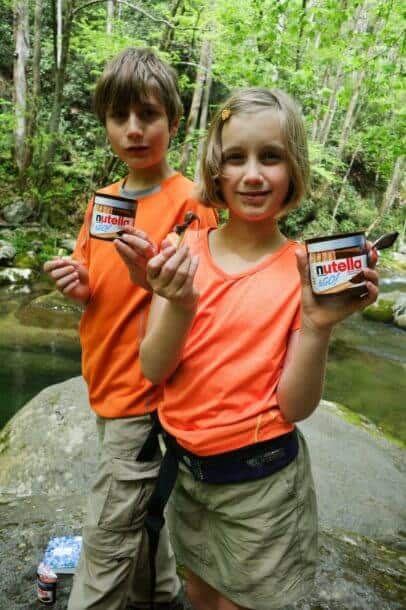
Nutella is always a hit!
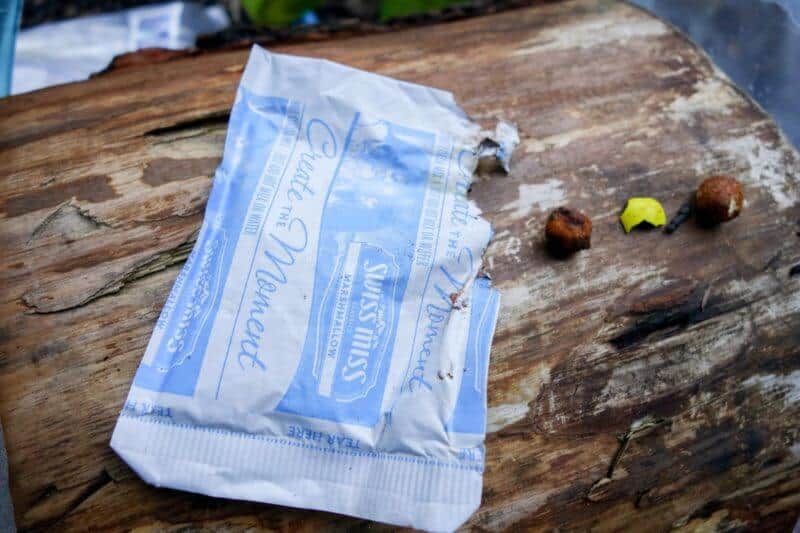
We dutifully hung our food from the bear poles the park provides on Friday night, so we were surprised to find evidence of little critters raiding our stash the next morning (they must have climbed the cables and sneaked in the tiny hole at the top of our food bag). We had to laugh though because the only food they ate were the items that had cocoa or chocolate. They were even clever enough to eat the candy coating and chocolate off the pretzel M&Ms and leave the pretzel part behind!
5. Teach them something fun.
I love nothing more on a hike than to identify various plants and trees I come across, simply for my own edification; however, if I teach only the names of what I learn to my kids, they don’t have much interest. The game changes when I bring along books that not only identify what we came across, but also educate us about what interesting features or medicinal properties a plant might have or even what folklore surrounds it.
Our favorite books to take on local hikes are the “Wildflowers, Reptiles and Amphibians, Trees, or Birds of the Smokies” series. Compact, colorful photography, and concise–I can’t say enough good things about these books. You can find them at local bookstores or at any gift shop within the park.
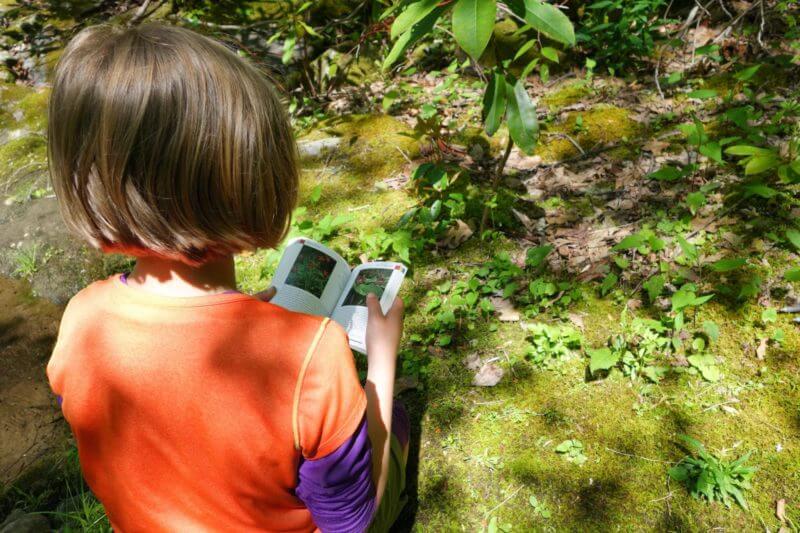
Paige loves identifying wildflowers and learning about their unique properties.
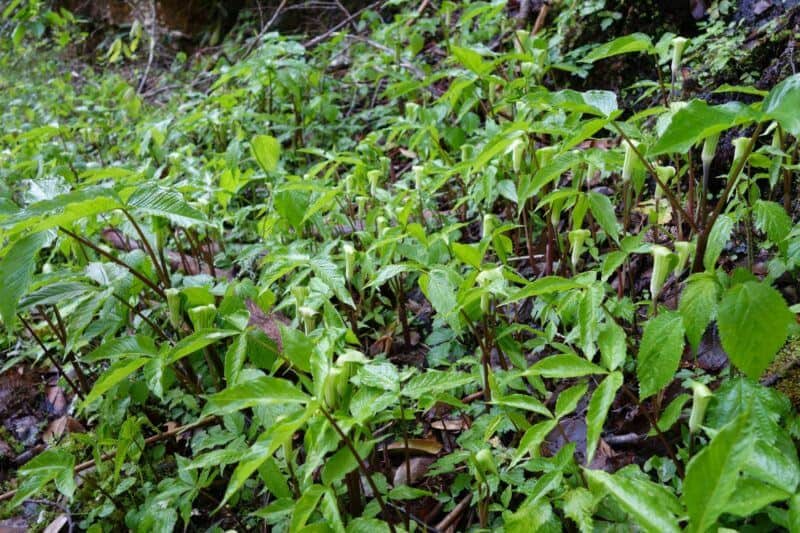
Because Paige had previously learned to identify Jack in the Pulpit, she quickly spotted an entire hillside of them–such a great find (and great eyes–I would have walked right past it!)

When our guidebook told us that this flower, Showy Orchis, is one of the most unique and special wildflower species you can find in the park, Paige and I felt very fortunate to find this one!
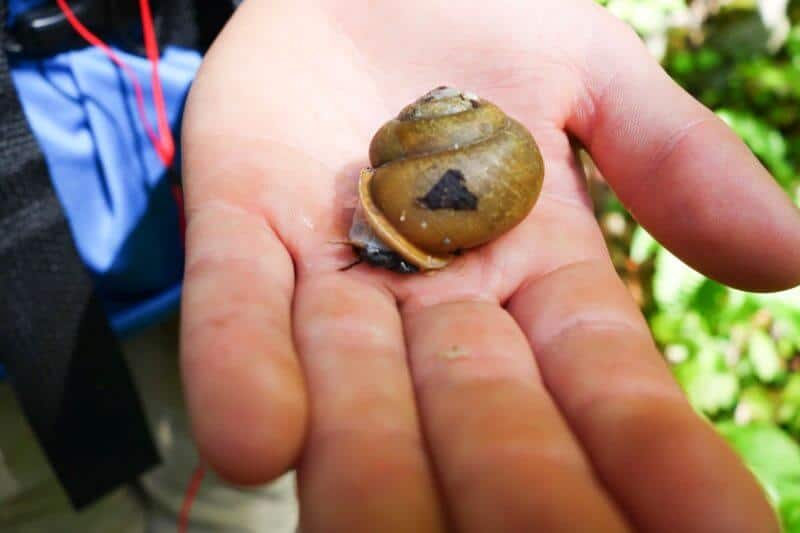
Aidan doesn’t care nearly as much about the flowers as he does the animal life we encounter. He has a great eye for spotting tiny things on the trail
6. Let them lead the conversation.
Hiking is not the time to rehash how many times you’ve asked your daughter to clean her room and it falls on deaf ears. It is the time to let them ramble on as long as they’d like about what they’re experiencing at school or their favorite video game. Young kids especially love to talk and share their interests, and in our hectic everyday lives, meaningful dialogue sometimes takes a back seat to logistics of the day. This is their chance for a captive adult audience–make that fact known to them and my guess is you’ll have a very happy (and very talkative) hiking companion. It’s also a great place to talk about the “heavy” stuff. Birds and the bees, anyone? For Aidan, the conversation happened over a campfire on a backpacking trip with Larry. The relaxed setting made it much less awkward and uncomfortable for both of them during “the talk.”
Games are also fun while you hike. Here’s a great link with lots of ideas for word games you can play as you hike.
7. Let technology be your third wheel.
As much as I wish my kids would tune into the sounds of the wilderness for our entire hike or talk to me about something that interests them, the truth is, sometimes they’d rather be listening to music or an audio book. The public library has a great system to check out audio book files, and my kids were plugged into an American Girl book and Old Yeller on our entire hike Friday. Admittedly, I had to keep my annoyance in check when I needed to get their attention. I felt like I was hiking with my late grandfather who was very hard of hearing! The annoyance dissipated quickly when Paige told me after hiking 5 miles, “I didn’t even notice my legs starting to get tired until I stopped listening to my book!”
8. Let them bring a friend.
Nothing distracts my kids like having a good friend in tow. Case in point: When we climbed Mt. Leconte for the scavenger hunt at Tremont, by far the toughest hike they’ve ever done, they conquered it with hardly a complaint. I’m 100% convinced the only reason it went off so well is because we had the happiest kid in Waynesville with us–our good buddy, Teagan! His positive energy is contagious anyway, but bringing him on a hike has a positive effect on all of us, parents included!
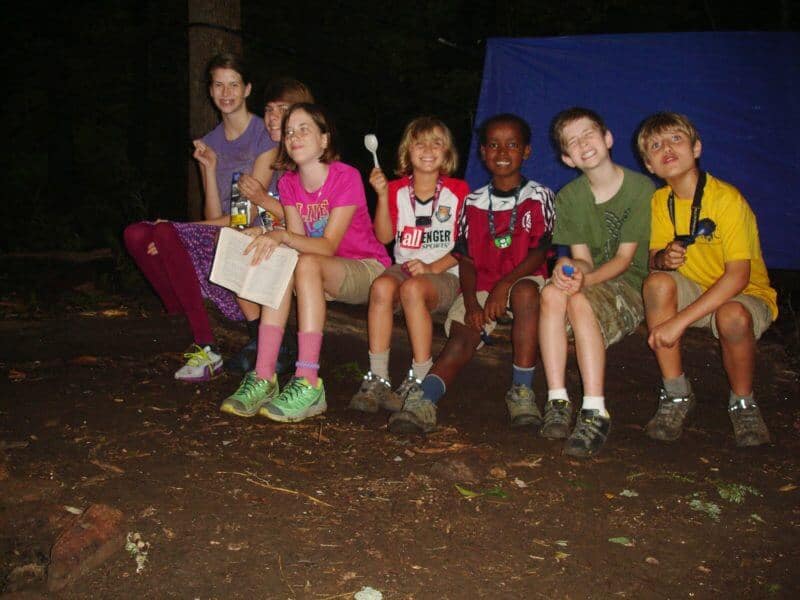
Our silly crew on our second trip on the Foothills Trail last summer! So. Much. Fun!
9. Empower them and yourself!
Whether it’s letting them help make the decision for the trail you hike, picking out the junk food you’ll take, or letting them help set up camp if you’re backpacking, kids love to feel important and needed. I am guilty of taking the planning reins and not letting go easily, but I know if I engage them in the process, they’re apt to be more interested.
Shepherding kids in the woods is tough though! I would be lying if I said I didn’t think of the “what ifs” each and every time we go on a hike into a remote section of the backcountry (and perhaps I should, considering some of our adventures on the Foothills Trail!). If you’re nervous something “bad” might happen (sprained ankle, bee stings, etc), empower yourself by taking a weekend Wilderness First Aid course. They are usually easy to find and will teach you a tremendous amount of knowledge to feel confident in your own abilities if something should go awry. I can attest that I feel much better after having done so myself.
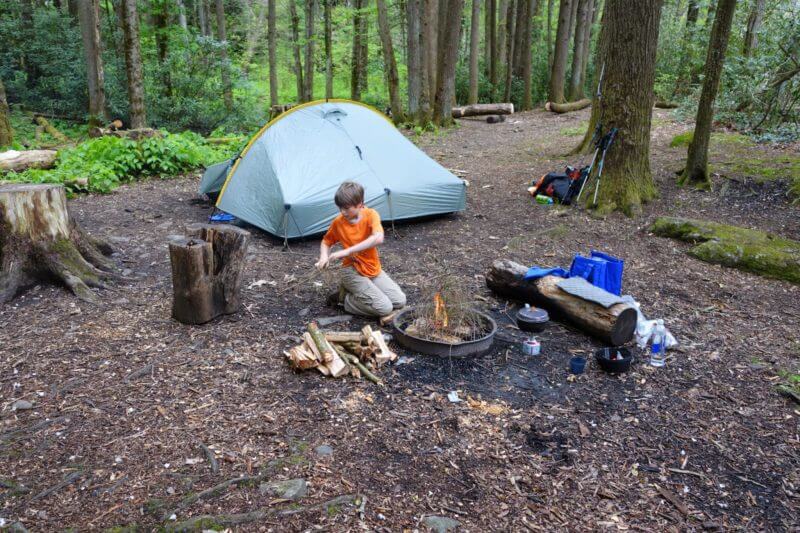
Aidan is the pyromaniac of the family and will usually step up to the plate quickly if I ask him to build a fire in camp
10. Get out there often and HAVE FUN!
As simple as it sounds, this can be the toughest of all to implement. There will always be an obstacle or commitment blocking your path to go do something fun. When we first started hiking and backpacking as a family, it felt like climbing Everest just to get out the front door sometimes. Now, not so much.
I’ve created a checklist for backpacking and hiking essentials that I keep on my phone and refer to before we leave each time, but I hardly need to refer to it anymore. “Practice makes perfect” definitely applies here, so make the commitment to do “x” amount of family hikes per month and you’ll quickly get in the planning and prepping groove also.
Most importantly, don’t forget to have fun out there! Remember, the point of the hike is to spend time together as a family in a setting that both inspires and recharges you. When you see the wilderness through the eyes of a child, you’ll feel as if you’re seeing it for the first time again yourself. There may be moments of drama or tears along the way occasionally, but ultimately, I promise you that your kids will thank you for creating memories with them that will last a lifetime!
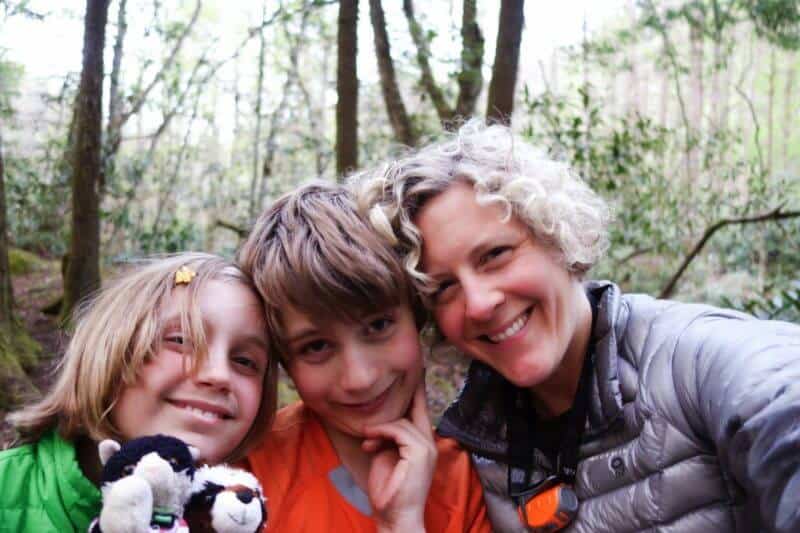
Now that we’ve got the hang of backpacking together, my kids usually see their Mom at her best self in the woods, which makes everyone a “happy camper.”
“We have such a brief opportunity to pass on to our children our love for this Earth, and to tell our stories. These are the moments when the world is made whole. In my children’s memories, the adventures we’ve had together in nature will always exist.” —Richard Louv, Last Child in the Woods: Saving Our Children from Nature-Deficit Disorder
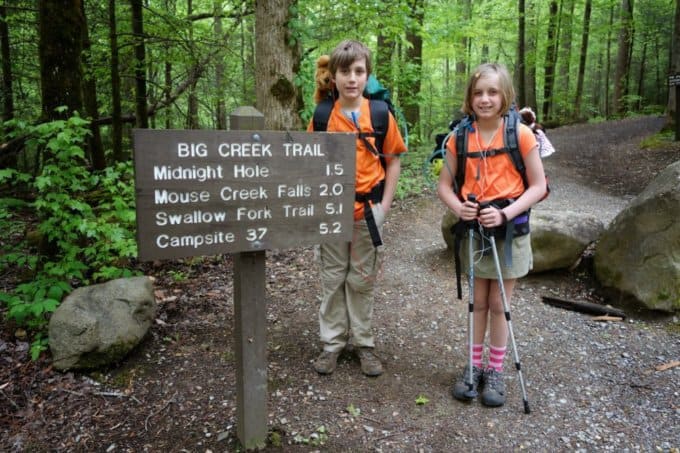
I hiked on Big Creek Trail on April 24 as part of the big loop to Mt Sterling. I was able to identify 43 different wildflowers but did not see one single jack-in-the-pulpit. Sharp eyes!